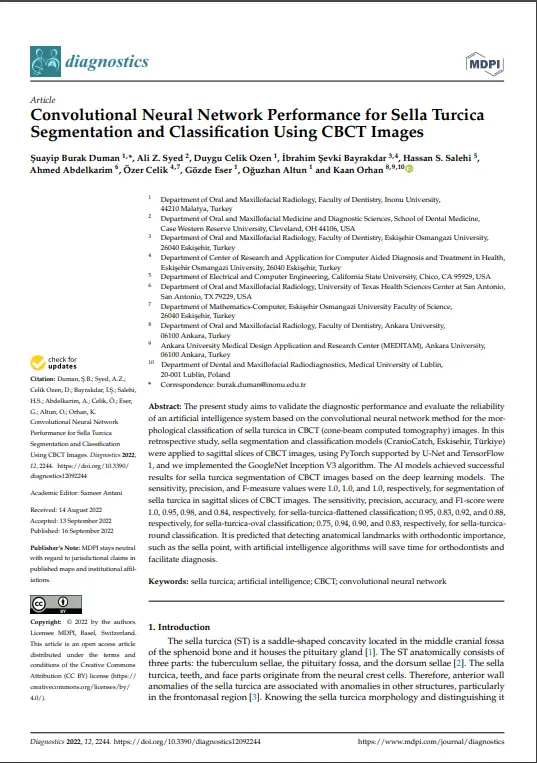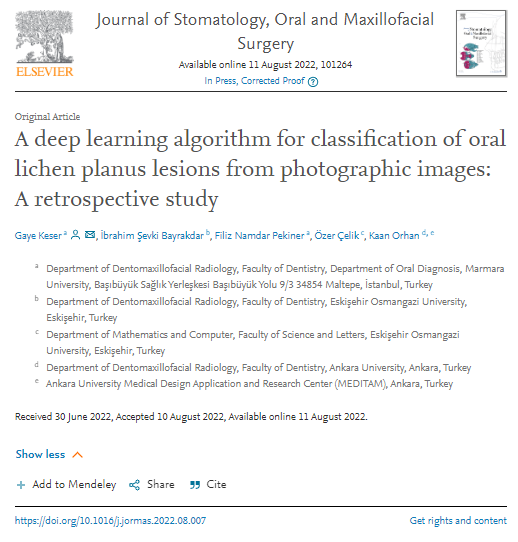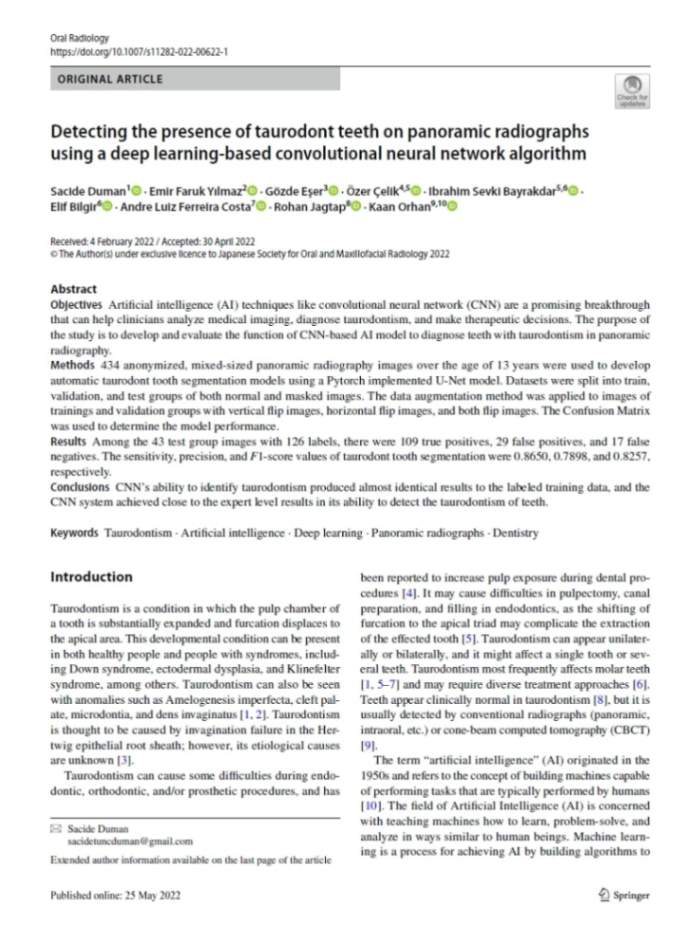Detecting the presence of taurodont teeth on panoramic radiographs using a deep learning‐based convolutional neural network algorithm
Introduction
The study investigates the use of a convolutional neural network (CNN)-based deep learning technique to diagnose taurodont teeth through the analysis of panoramic radiographs. Taurodontism is a dental anomaly characterized by an elongated pulp chamber and short roots, which can complicate dental treatments.
Importance of Panoramic Radiographs
Panoramic radiographs are valuable in diagnosing dental anomalies as they provide a comprehensive view of the entire dentition on a single film. They are particularly beneficial for pediatric dentistry due to their low radiation exposure and time efficiency. However, interpreting these images can be challenging due to subjective evaluations and variability among observers.
Role of Artificial Intelligence
AI is proposed as a decision-support system to assist dentists in reducing diagnostic errors, especially in high-workload environments. It can help standardize data, archive images, and facilitate early diagnosis and treatment planning. The study emphasizes the potential of AI to capture details that may be overlooked by less experienced practitioners.
Methodology
The study utilized a dataset comprising 126 labeled teeth with taurodontism, categorized into three types: hypotaurodont, mesotaurodont, and hypertaurodont. The taurodont index (TI), a ratio-based measurement developed for radiological classification, was employed to objectively assess the severity of taurodontism.
Results
The mean TI scores for the different types of taurodont teeth were reported as follows:
- Hypotaurodont: 26.30 ± 2.33
- Mesotaurodont: 34.61 ± 3.25
- Hypertaurodont: 82.55 ± 24.34
These scores indicate varying degrees of taurodontism severity among the test group.
Challenges in Segmentation
The study highlights the complexities involved in segmenting multi-rooted teeth, particularly maxillary molars, which can overlap with anatomical structures like the maxillary sinus. This complexity poses challenges for automated segmentation and diagnosis of taurodontism.
Future Directions
The study suggests that future research could include subgroup analyses to compare the detection of taurodont teeth in the maxilla versus the mandible, enhancing the understanding of how AI can be applied in different anatomical contexts.
Conclusion
This research represents a significant step in integrating AI into dental diagnostics, particularly for identifying taurodont teeth. The findings underscore the potential of deep learning techniques to improve diagnostic accuracy and support dental practitioners in their clinical decision-making processes.
I Want to Write a Scientific Research Project
CranioCatch is a global leader in dental medical technology that improves oral care in the field of dentistry. With AI-supported clinical, educational, and labeling solutions, we provide significant improvements in the diagnosis and treatment of dental diseases using contemporary approaches in advanced machine learning technology.
CranioCatch serves thousands of patients with dental health issues worldwide every day with its innovative technologies. That’s why we eagerly look forward to meeting our valued dentists who wish to work in the field of 'Scientific Research in Dentistry'.



 Contact Us
Contact Us

